Common time complexities Let n be the main variable in the problem If n ≤ 12, the time complexity can be O (n!) If n ≤ 25, the time complexity can be O (2 n ) If n ≤ 100, the time complexity can be O (n 4 ) If n ≤ 500, the time complexity can be O (n 3 ) If n ≤ 10 4, the time complexity can be O (n 2 )The Time Complexity of an Algorithm Specifies how the running time depends on the size of the input n2 100 10,000 106 108 n3 1,000 106 109 1012 2n 1,024 1030 n n < 22n Lie in between 55 Which Functions are Exponential?It represents the average case of an algorithm's time complexity Suppose you've calculated that an algorithm takes f (n) operations, where, f (n) = 3*n^2 2*n 4 // n^2 means square of n Since this polynomial grows at the same rate as n2, then you could say that the function f
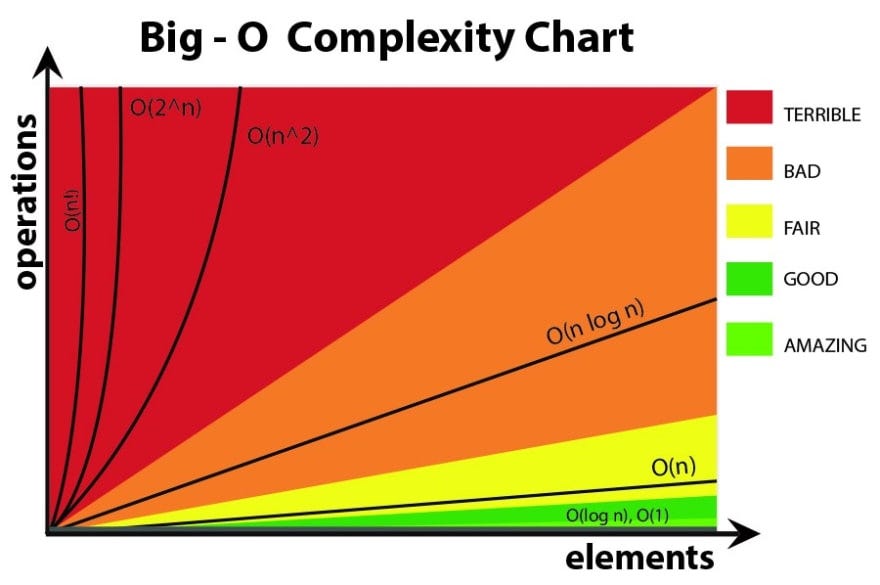
A Beginner S Guide To Big O Notation Part 2 By Alison Quaglia The Startup Medium
2n vs n^2 time complexity
2n vs n^2 time complexity-See the answer Find the time complexity of the following recurrence O (1) — Constant Time Constant Time Complexity describes an algorithm that will always execute in the same time (or space) regardless of the size of the input data set In JavaScript, this can




Is There A Difference Between N Log Log N And N Log 2n Mathematics Stack Exchange
The complexity class P polynomial time P The set of problems solvable by algorithms with running time O(nd) for some constant d the differences among nand 2n and n2are negligible Rather, simple theoretical tools may not easily capture such differences, whereas exponentials areLine 56 doubleloop of size n, so n^2 Line 713 has ~3 operations inside the doubleloop;Time Complexity Formal Definition "Let M be a deterministic Turing machine that halts on all inputs The running time or time complexity of M is the
Number of times executed n x (1 x n 3 x 2n) = n 2 6n 2 = 7n 2 Complexity O (n 2) Since in BigOh analysis we ignore leading constants (the 7 in the equation above), this algorithm runs in O(n 2) time Example 4 Dim iSum,i,j,k As Integer For i = 1 to n Time Complexity The time complexity is the number of operations an algorithm performs to complete its task with respect to input size (considering that each operation takes the same amount of time) The algorithm that performs the task in the smallest number of operations is considered the most efficient oneAfter understanding this, i would like to understand the calculation for time complexity as a function of the input size for a similar problem Let q 1 ( k), , q 2 n ( k) be 2 n polynomials of degree smaller or equal to 2 n Let f ( n) N → N defined by f
A quadratictime algorithm is "order N squared" O(N2) Note that the bigO expressions do not have constants or loworder terms This is function of the problem size N, and that F(N) is an upperbound on that complexity (ie, the actual time/space or whatever for a problem of size N will be no worse than F(N)) In practice, we want the Various configurations of redundant system design may be used based on the associated risk, cost, performance and management complexity impact These configurations take various forms, such as N, N1, N2, 2N, 2N1, 2N2, 3N/2, among others These multiple levels of redundancy topologies are described as NModular Redundancy (NMR)N^2 3N 4 is O(N^2) since for N>4, N^2 3N 4 < 2N^2 (c=2 & k=4) O(1) constant time This means that the algorithm requires the same fixed number of steps regardless of the size of the task Example 1)a statement involving basic operations Here are some examples of basic operations




The Time Complexities Number Of Operations For An N Qubit System Download Scientific Diagram
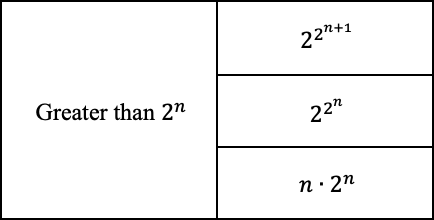



What Is Big O Notation Explained Space And Time Complexity
As a 2nd example, for large problems, mergesort beats insertion sort – n log n vs n2 matters a lot! O(n^2) O(n^2Logn) Output 2 O(nLogn) Explanation If you notice, j keeps doubling till it is less than or equal to n Several times, we can double a number till it is less than n would be log(n) Let's take the examples here for n = 16, j = 2, 4, 8, 16 for n = 32, j = 2, 4, 8, 16, 32 So, j would run for O(log n) steps i runs for n/2 steps If you have an algorithm with a complexity of (n^2 n)/2 and you double the number of elements, then the constant 2 does not affect the increase in the execution time, the term n causes a doubling in the execution time and the term n^2
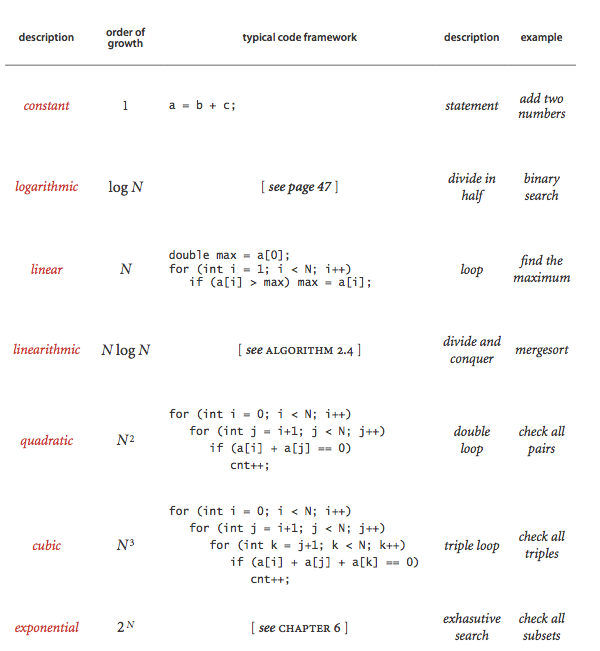



Analysis Of Algorithms




Calculate Time Complexity Algorithms Java Programs Beyond Corner
• 2n • 0001 n • nTime complexity is used to deduce the rate of which the time of an algorithm increases An algorithm whose complexity increases by a factor of 2N will take the same time as an algorithm whose time increases by a factor of N Since both depend on the value of N and not 2 as it is a constant and doesn't affect the growthThe time complexity depends on how many nodes the recursion tree has In the worst case, the recursion tree has the most nodes, which means the program should not return in the middle and it should try as many possibilities as possible So the branches and depth of
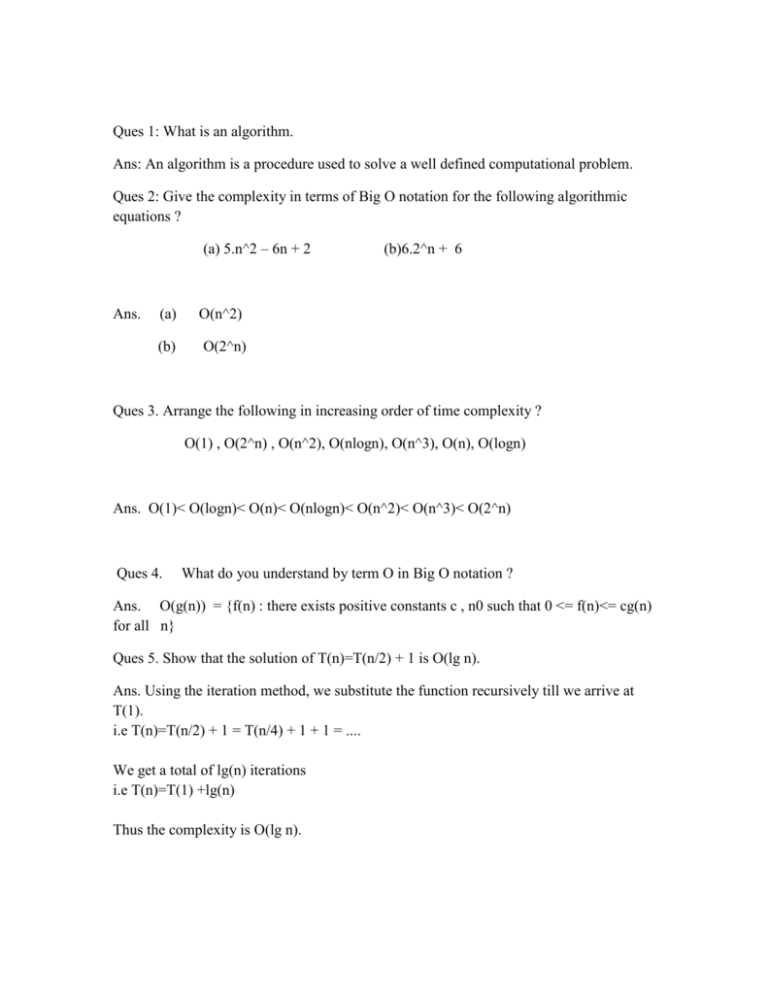



Ques 1 Define An Algorithm




Time And Space Complexity Aspirants
We get 3n^2 2 When we have an asymptotic analysis, we drop all constants and leave the most critical term n^2 So, in the big O notation, it would be O(n^2) We are using a counter variable to helpEven tho the alg is more complex & inner loop slower! Now for a quick look at the syntax O(n 2) n is the number of elements that the function receiving as inputs So, this example is saying that for n inputs, its complexity
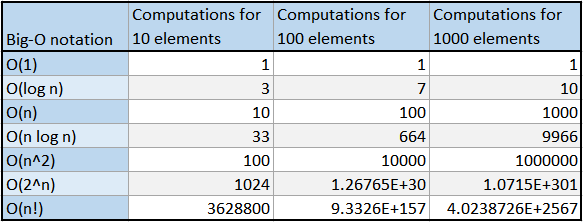



Understanding Big O Notation




Which Is Better O N Log N Or O N 2 Stack Overflow
It will be easier to understand after learning O(n), linear time complexity, and O(n^2), quadratic time complexity Before getting into O(n), let's begin with a quick refreshser on O(1), constant time complexity O(1) Constant Time Complexity Constant time compelxity, or O(1), is just that constant Time Complexity of algorithm/code is not equal to the actual time required to execute a particular code but the number of times a statement executes We can prove this by using time command For example, Write code in C/C or any other language to find maximum between N numbers, where N varies from 10, 100, 1000,$$S(n) = T(2^n) =2T(\frac{2^n}2)2^n = 2T(2^{n1})2^n = 2S(n1)2^n $$ So you have to solve recursion $$S(n) = 2S(n1) 2^n,$$ or $$S(n)2S(n1) = 2^n$$ So, $$S(n1) 2S(n2) = 2^{n1}$$ and $$2S(n1) 4S(n2) = 2^n$$ So, $$S(n) 2S(n1) = 2S(n1)4S(n2)$$ or $$S(n) 4S(n1)4S(n1) = 0$$ Characteristic equation for the recursion is
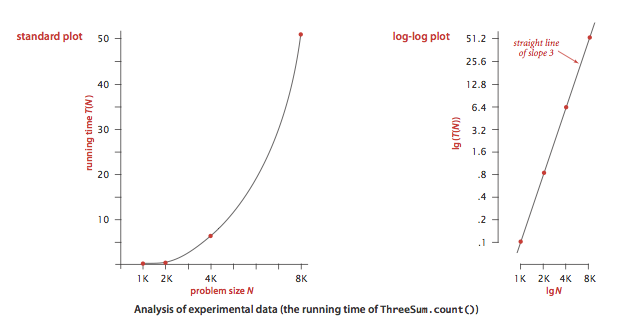



Analysis Of Algorithms



Intro To Algorithms Chapter 2 Growth Of Functions
T(n) = T(n/3) 2T(2n/3) n First of all, we are able to guess that this is going to be something like n^c, since this is at least as much as R(n) = 2R(2n/3) n To analyze R(n), we see that a = 2, b = 15, f(n) = n, which can be solved using MT, and gives a simple n^(log_15(2)), that is, n^(log 2/log 15), which is ~ n^171 Suppose T(nN > 1 implies n 2 2n1 < n 3n < 4n2 CS 2233 Discrete Mathematical Structures Order Notation and Time Complexity – 13 7 Example 2, Slide 3 Try k = 10 and C = 2 Want to prove n > 10 implies n2 2n1 ≤ 2n2 Assume n > 10 Want to show n2 2n1 ≤ 2n2 Work on the lowestorder term first n > 10 implies n > 1, which implies n 2 2n1 Time complexity analysis Line 23 2 operations;




Lec03 04 Time Complexity




Cs240 Data Structures Algorithms I
Although an algorithm that requires N 2 time will always be faster than an algorithm that requires 10*N 2 time, for both algorithms, if the problem size doubles, the actual time will quadruple When two algorithms have different bigO time complexity, the constants and loworder terms only matter when the problem size is smallIf there is a constant, call it c, such that the running time is less than c*(2N), then there also exists a constant, namely d = c*2, such that the running time is less than d*N The converse holds as well, so O(N) = O (2N) So it would actually be more accurate to say that the new iterate() function has a time complexity of O(nn) or O(2n) But consider this the time it takes to run an operation n times versus 2n times is on the same order of magnitude (unlike say, n operations versus n² operations)
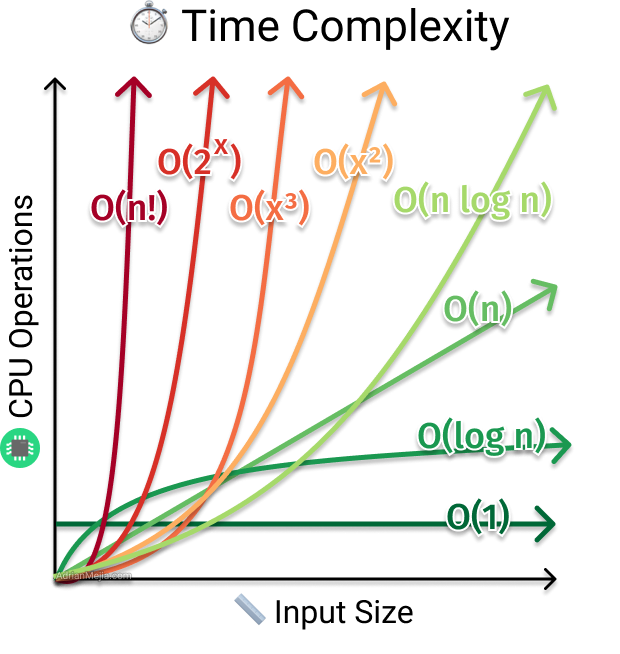



How To Find Time Complexity Of An Algorithm Adrian Mejia Blog




Which Is Better O N Log N Or O N 2 Stack Overflow
For example, F(2N) = (2N) 2 = 4N 2 Example empirical results O(n) vs O(n^2) algorithms Linear n = 1000, time = Quadratic n = 1000, time = Linear n = 00, time = Quadratic n = 00, time = Linear n = 4000, time = Quadratic n = 4000, time = Linear n = 8000, time = Quadratic n = 8000, time = Linear n = , timeEfficiency Our correct TSP algorithm was incredibly slow! see 2^n and n2^n as seen n2^n > 2^n for any n>0 or you can even do it by applying log on both sides then you get nlog(2) < nlog(2) log(n) hence by both type of analysis that is by substituting a number using log we see that n2^n is greater than 2^n as visibly seen so if you get a equation like O ( 2^n n2^n ) which can be replaced as O ( n2^n)




Understanding Time Complexity With Python Examples By Kelvin Salton Do Prado Towards Data Science



What Is The Time Complexity Of T N 2t N 2 Nlogn Quora
$T(n) = T(n1) T(n2)$ The run time complexity for the same is $O(2^n)$, as can be seen in below pic for $n=8$ However if you look at the bottom of the tree, say by taking $n=3$, it wont run $2^n$ times at each level Q1 Wont this fact have any effect on time complexity or does the time complexity $O(2^n)$ ignores this fact? How To Calculate Big O — The Basics In terms of Time Complexity, Big O Notation is used to quantify how quickly runtime will grow whenRemember, BigO time complexity gives us an idea of the growth rate of a function In other words, for a large input size N, as N increases, in what n 2 n = 2n 1 = O(n) (f) O(n log n) Here, we cannot just add up the number of method calls Do not forget that the
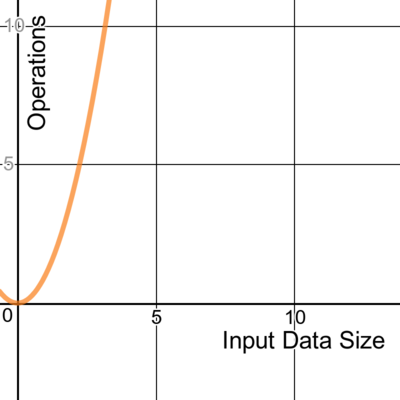



Victoria Dev




A Gentle Introduction To Algorithm Complexity Analysis
So there must be some type of behavior that algorithm is showing to be given a complexity of log n Let us see how it works Since binary search has a best case efficiency of O(1) and worst case (average case) efficiency of O(log n), we will look at an example of the worst case In the case for n=2 and complexity O (2n^22) being 24 24 = (2*2^2 2)*c, hence c = 24/10 = 24 Now we compute for n=4 (2*4^24)*24= 36*24 = 864 units of time If d is not 0 the c = (24d)/10 and for n=4 it would take 36* (24d)/10 d = 864 09dSuppose the run time of a program is ( n2) Suppose further that the program runs in t0 = 5 sec when the input size is n0 = 100 Then t(n) = 5 n2 1002 sec Thus, if the input size is 1000, then the run time is t(1000) = 5 1002 = 500 sec Robb T Koether (HampdenSydney College) Time Complexity Wed, 14 / 39




Time Complexity Analysis Of Recursion Fibonacci Sequence Youtube
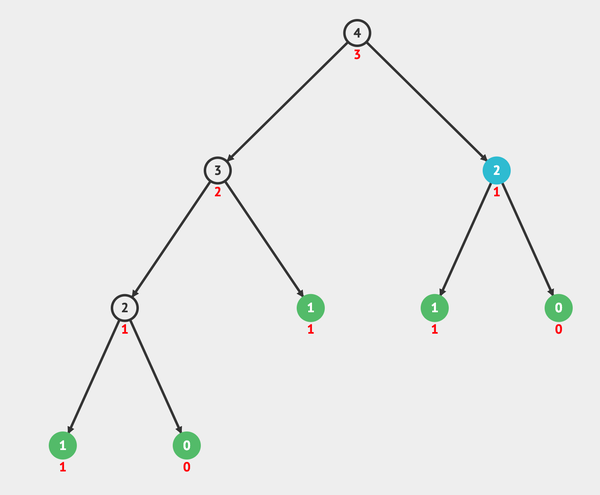



Understanding Time Complexity With Python Examples By Kelvin Salton Do Prado Towards Data Science
4 BigOh (O) Notation T(n) is often expressed as a function that has several terms Each term also may have constant coefficients For example, T(n) = 60n 2 5n 1 But we are mostly interested in an approximation the order of the function (or order of growth) So we only look at the dominant term (60n 2 in the above) and drop its coefficient (60) to obtain the complexity/growth rate (n 2)No matter what computer you have!Question Find The Time Complexity Of The Following Recurrence F(n)=3f(n/2)2n This problem has been solved!




How To Calculate Time Complexity Of Your Code Or Algorithm Big O 1 O N O N 2 O N 3 Youtube




Data Structures 1 Asymptotic Analysis Meherchilakalapudi Writes For U
Suppose the time complexity of Algorithm A is 3n2 2n log n 1/(4n) Algorithm B is 039n3 n Intuitively, we know Algorithm A will outperform B When solving larger problem, ie larger n The dominating term 3n2 and 039n3 can tell us approximately how the algorithms perform The terms n2 and n3 are even simpler and preferred It is the case that n 2 n 2 ≤ 1 ⋅ n 2 as long as n ≥ 2 So the answer is yes Just remember that at the same time it's also of O ( n 3) and O ( 2 n), since bigO only gives an upper bound However, as a general rule, we want to find the smallest simple expression that works, and in this case it's n 2




A Beginner S Guide To Big O Notation Part 2 By Alison Quaglia The Startup Medium




How To Calculate Time Complexity With Big O Notation By Maxwell Harvey Croy Dataseries Medium
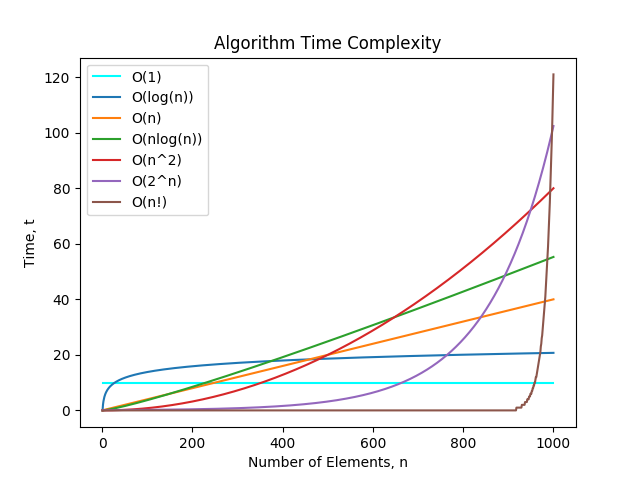



Algorithm Time Complexity Mbedded Ninja



Complexity And Big O Notation




Which Is Better O N Log N Or O N 2 Stack Overflow




What Is Big O Notation Understand Time And Space Complexity In Javascript Dev Community




Comp108 Algorithmic Foundations Divide And Conquer Ppt Download



Search Q Big O Notation Tbm Isch



Running Time Graphs
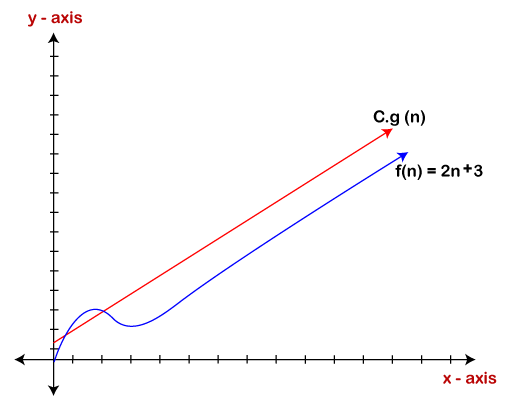



Ds Asymptotic Analysis Javatpoint



1




Solved 2 Interpretation Time Complexity Assume Expressions Describes Processing Time T N Needed A Q3960




How Come The Time Complexity Of Binary Search Is Log N Mathematics Stack Exchange
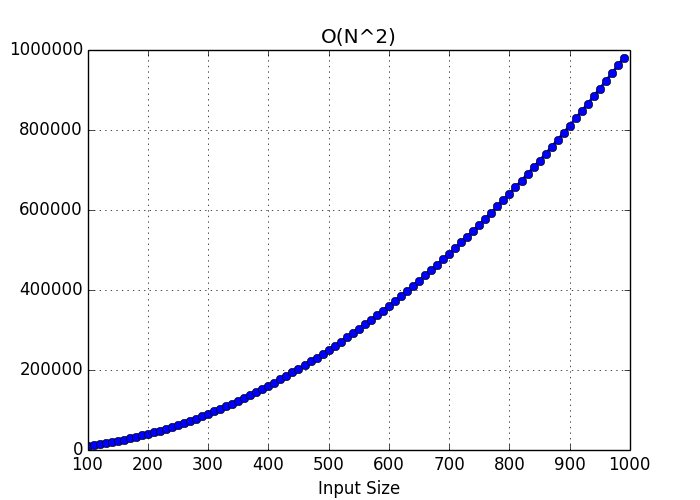



A Simple Guide To Big O Notation Lukas Mestan



Running Time Graphs
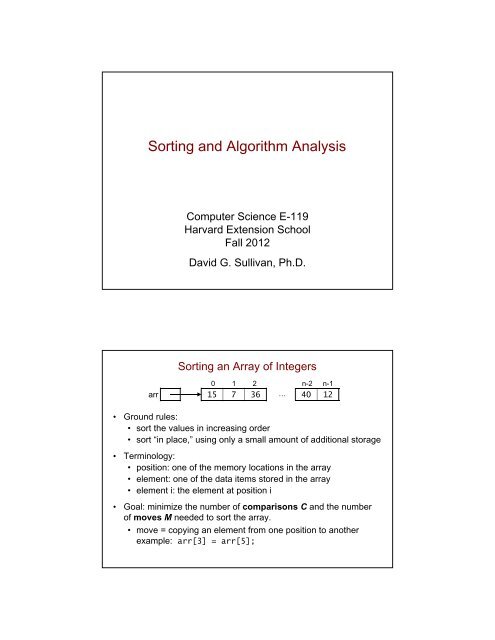



Sorting And Algorithm Analysis




Practice Problems Recurrence Relation Time Complexity




Asymptotic Notations Theta Big O And Omega Studytonight




Algorithm Complexity Programmer Sought
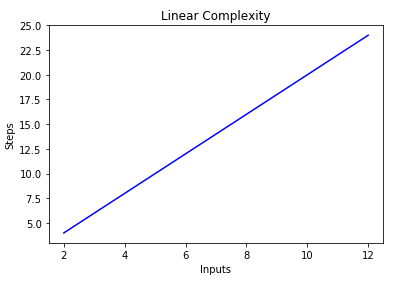



Big O Notation And Algorithm Analysis With Python Examples Stack Abuse
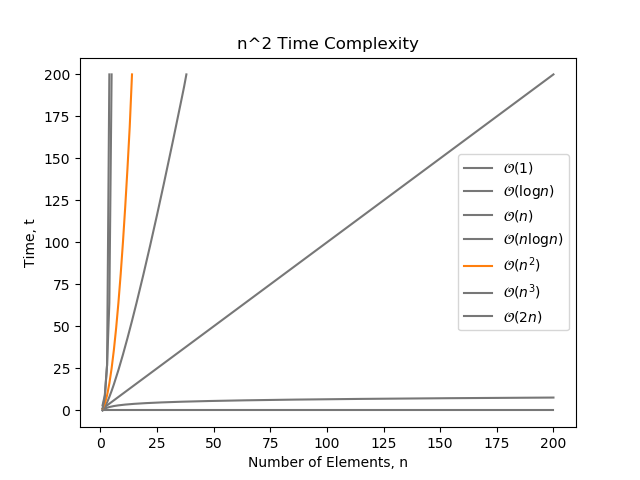



Algorithm Time Complexity Mbedded Ninja



Www Inf Ed Ac Uk Teaching Courses Dmmr Slides 13 14 Ch3 Pdf
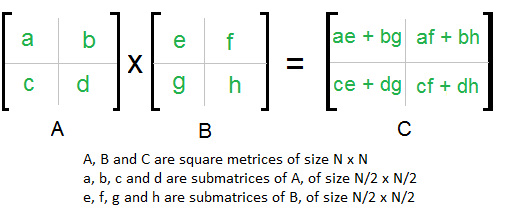



Divide And Conquer Set 5 Strassen S Matrix Multiplication Geeksforgeeks




Time And Space Complexity Analysis Of Algorithm



1




Calculate Time Complexity Algorithms Java Programs Beyond Corner




Analysis Of Algorithms Set 3 Asymptotic Notations Geeksforgeeks
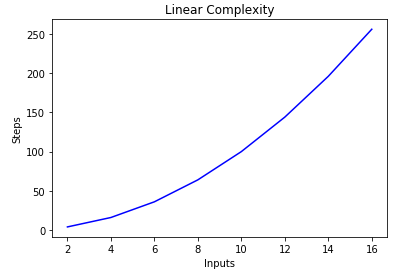



Big O Notation And Algorithm Analysis With Python Examples Stack Abuse




Understanding The O 2 N Time Complexity Dev Community




Time Complexity Wikipedia




Data Structure And Algorithm Notes



Time Complexity Gate Overflow
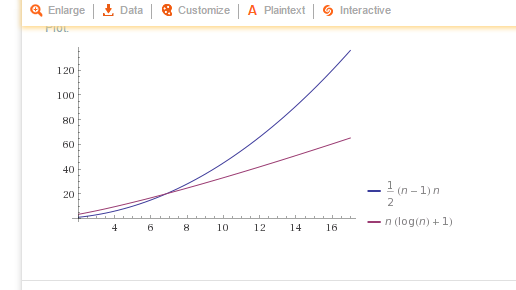



Comparing The Complete Functions Of N 2 Vs N Log N Talk Gamedev Tv
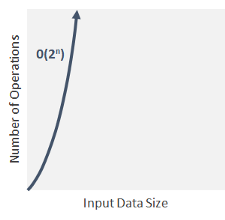



Time Complexity How To Measure The Efficiency Of Algorithms Kdnuggets
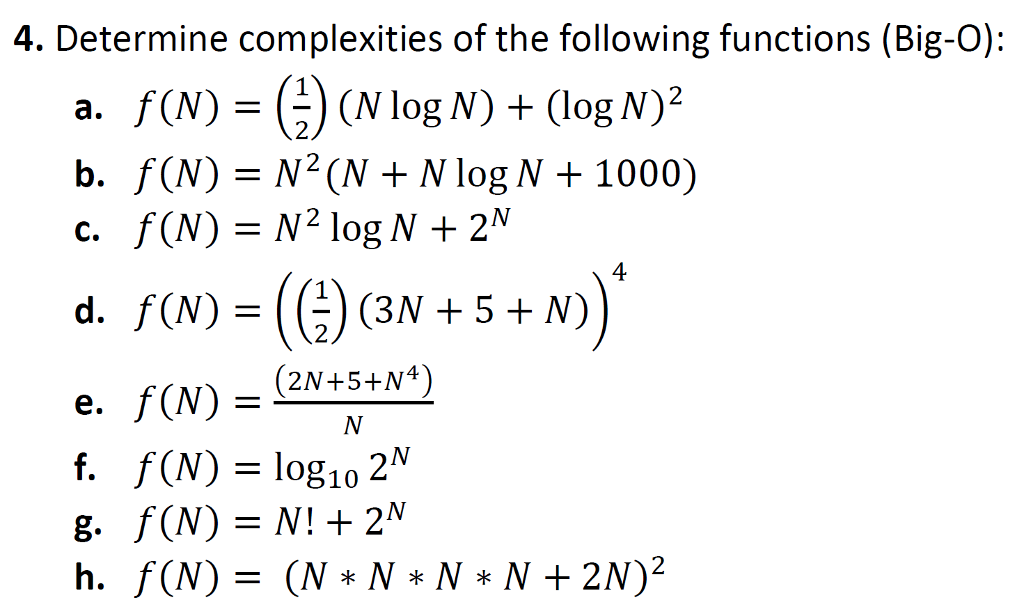



Determine Complexities Of The Following Functions Chegg Com




Is There A Difference Between N Log Log N And N Log 2n Mathematics Stack Exchange



Http Courses Ics Hawaii Edu Reviewics141 Morea Algorithms Growthfunctions Qa Pdf



Http Www Jsums Edu Nmeghanathan Files 16 01 Csc323 Sp16 Qb Module 1 Efficiency Of Algorithms Pdf X




What Is Big O Notation Explained Space And Time Complexity



Algorithm Efficiency




Algorithm Analysis Magic Time Complexity Space Complexity Stability Programmer Sought




A Gentle Explanation Of Logarithmic Time Complexity The Eepy



Http Www Comp Nus Edu Sg Cs10 Tut 15s2 Tut09ans T9 Ans Pdf




3 3 Big O Notation Problem Solving With Algorithms And Data Structures
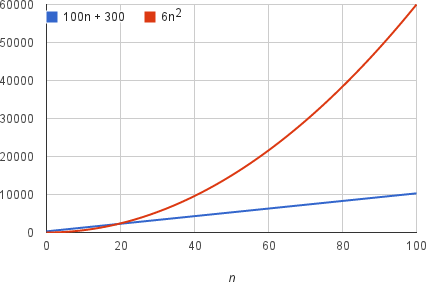



Asymptotic Notation Article Algorithms Khan Academy



Http Www Jsums Edu Nmeghanathan Files 16 01 Csc323 Sp16 Qb Module 1 Efficiency Of Algorithms Pdf X
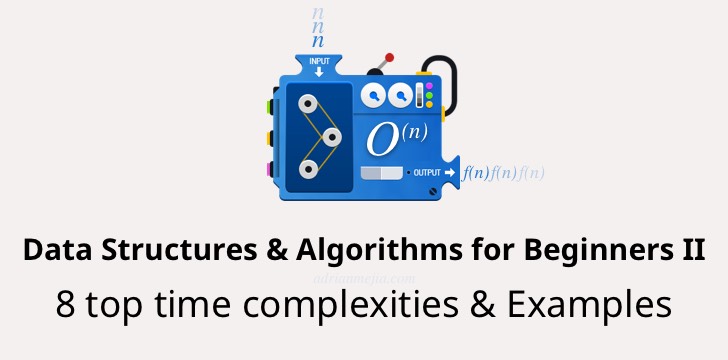



8 Time Complexities That Every Programmer Should Know Adrian Mejia Blog




Big O Notation Algorithm Quiz Test Proprofs Quiz
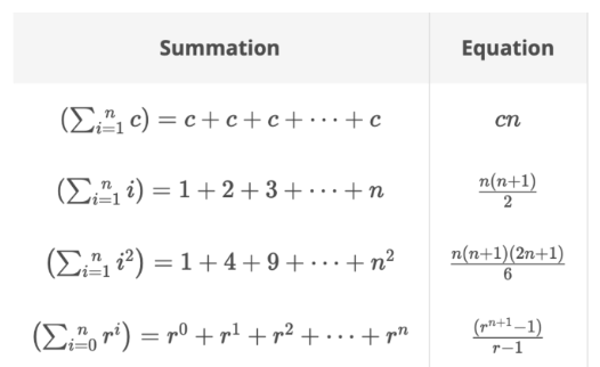



Big O Notation A Primer For Beginning Devs




Big O Notation 101 Computing



What Is Difference Between O N Vs O 2 N Time Complexity Quora




Lecture Recursion Trees And The Master Method




What Is Big O Notation Explained Space And Time Complexity
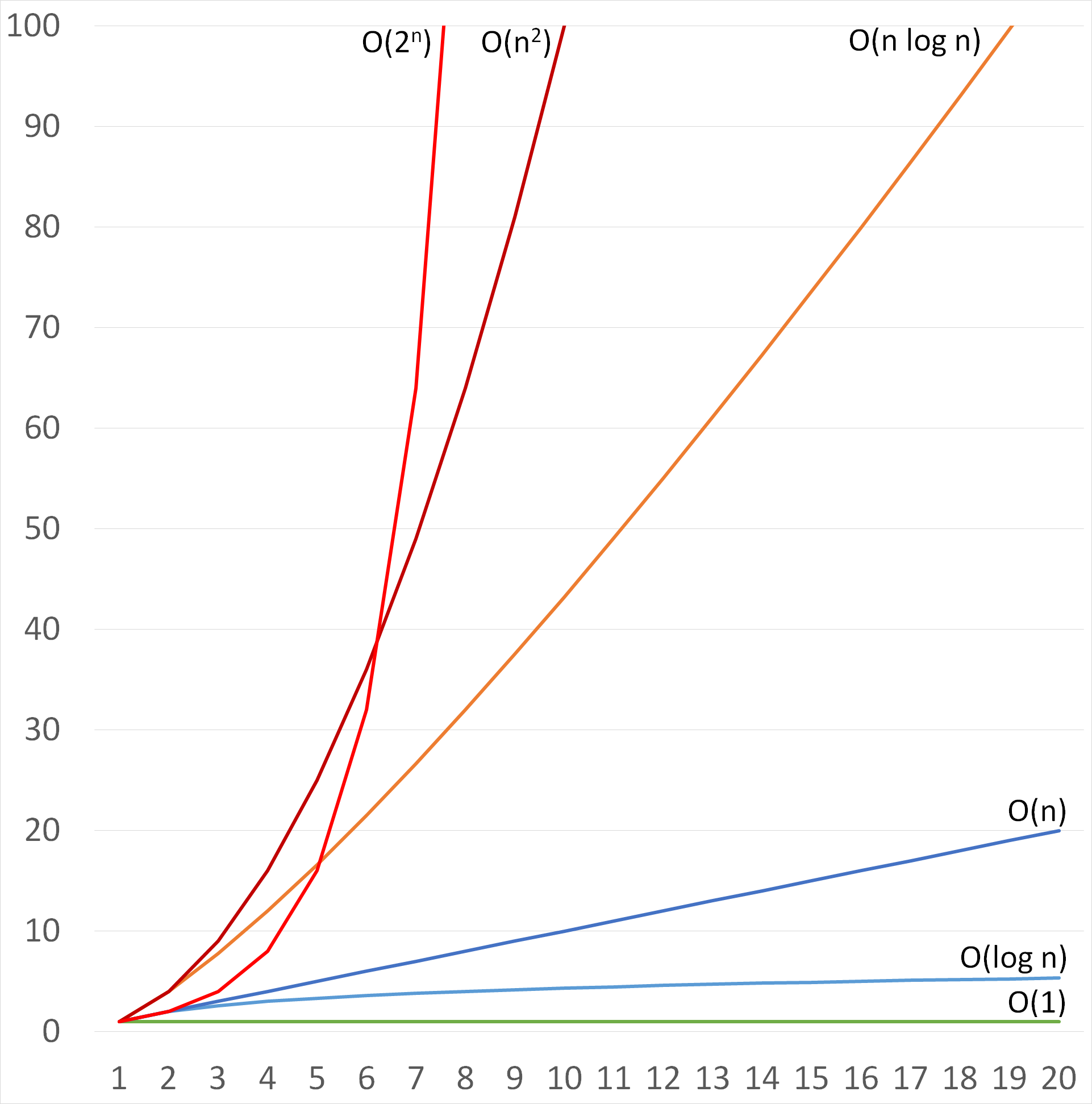



Algorithm Complexity Delphi High Performance
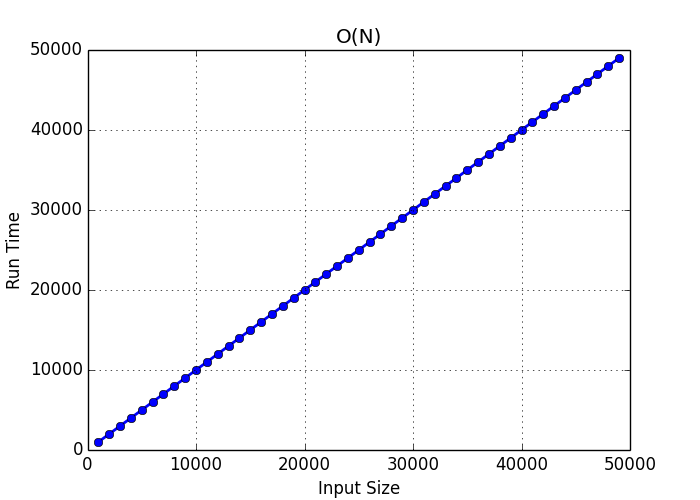



A Simple Guide To Big O Notation Lukas Mestan
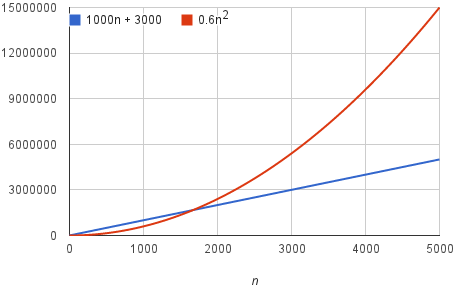



Asymptotic Notation Article Algorithms Khan Academy
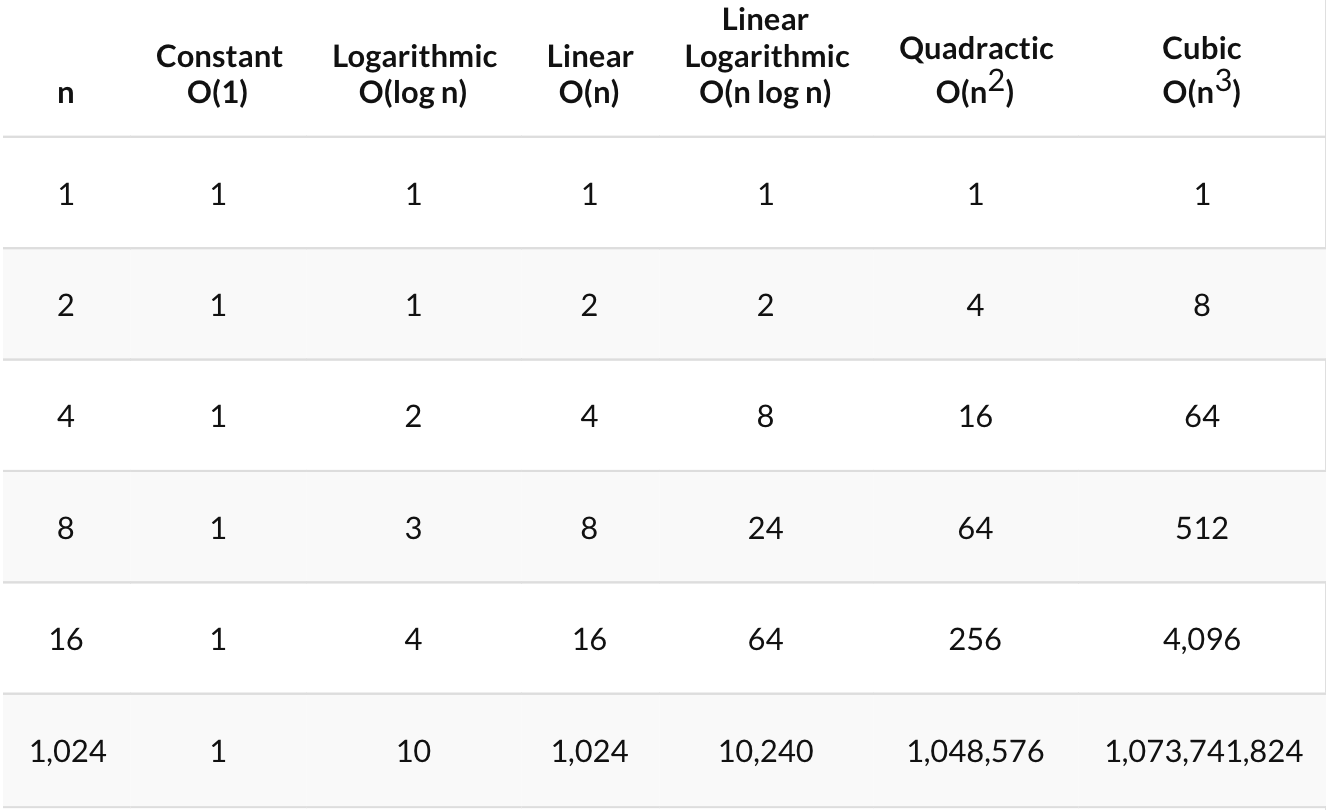



Learning Big O Notation With O N Complexity Dzone Performance




Complete Guide To Understanding Time And Space Complexity Of Algorithms
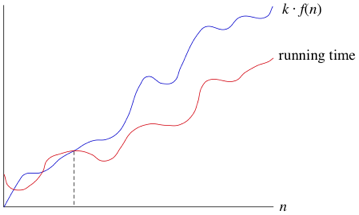



Big O Notation Article Algorithms Khan Academy




Slides Show



2




Big O Cheat Sheets



1
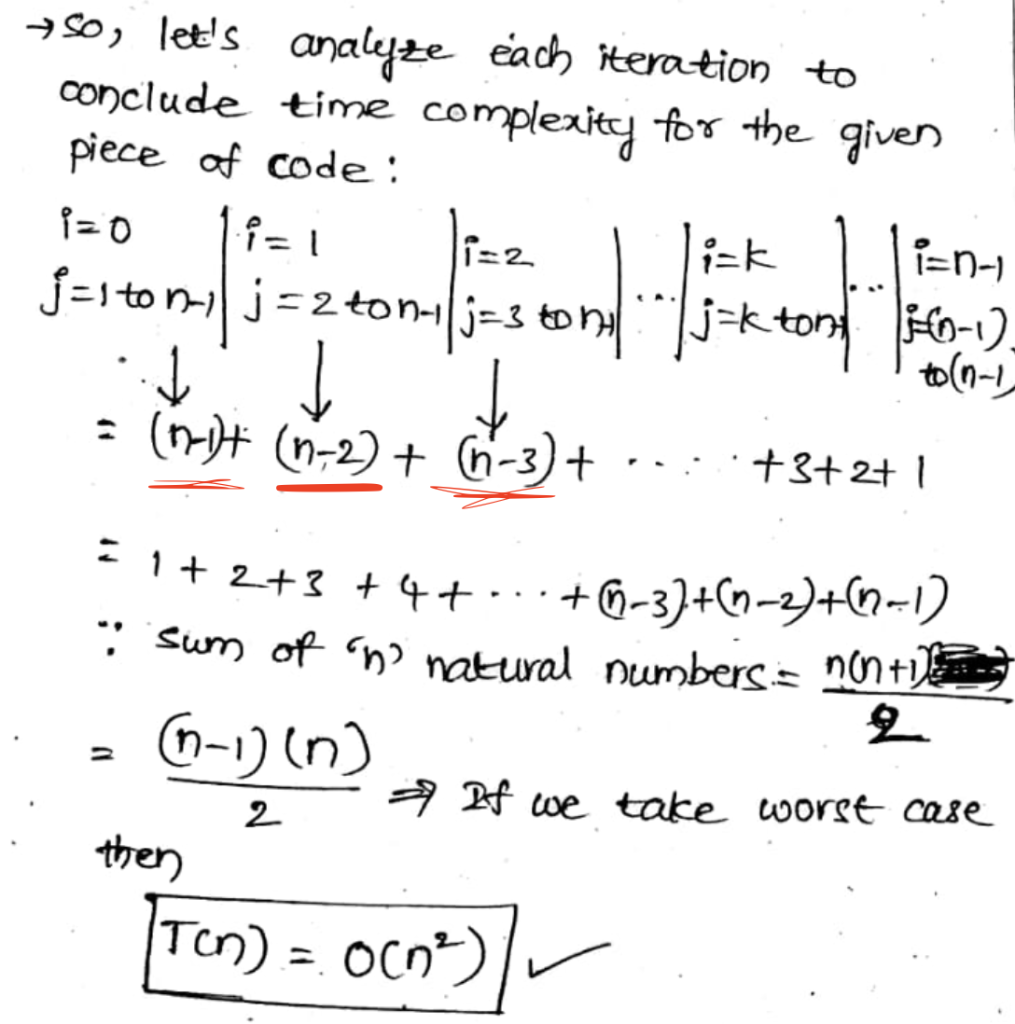



Time Complexity Analysis How Are The Terms N 1 Chegg Com
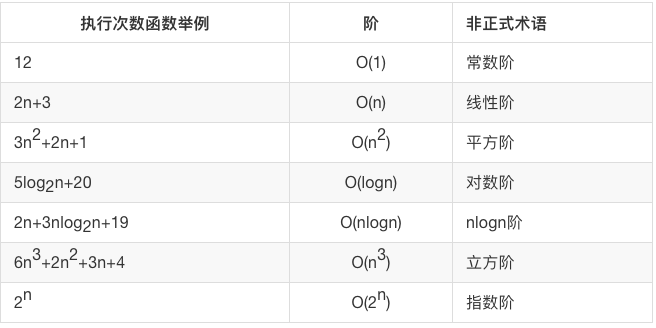



Python Algorithms And Data Structures An Introduction To Algorithms 31




Which Is Better O N Log N Or O N 2 Stack Overflow




Big O Notation Definition And Examples Yourbasic



What Is Difference Between O N Vs O 2 N Time Complexity Quora




Big O Notation Breakdown If You Re Like Me When You First By Brett Cole Medium




Chapter 2 Algorithm Analysis All Sections 1 Complexity
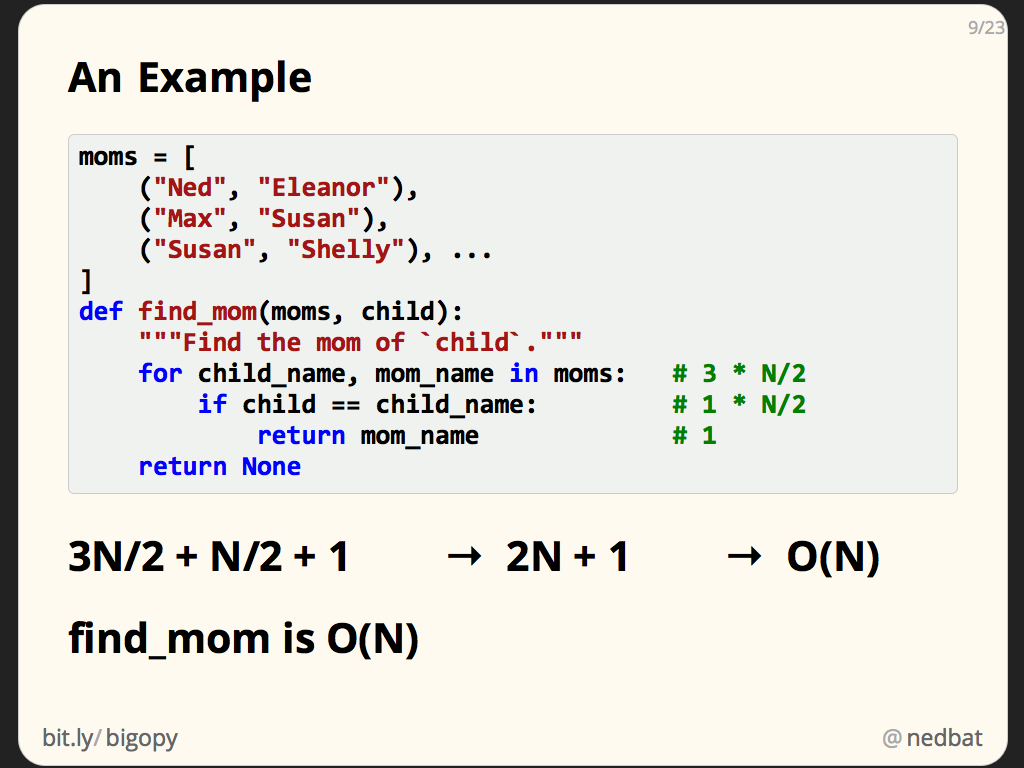



Big O How Code Slows As Data Grows Ned Batchelder
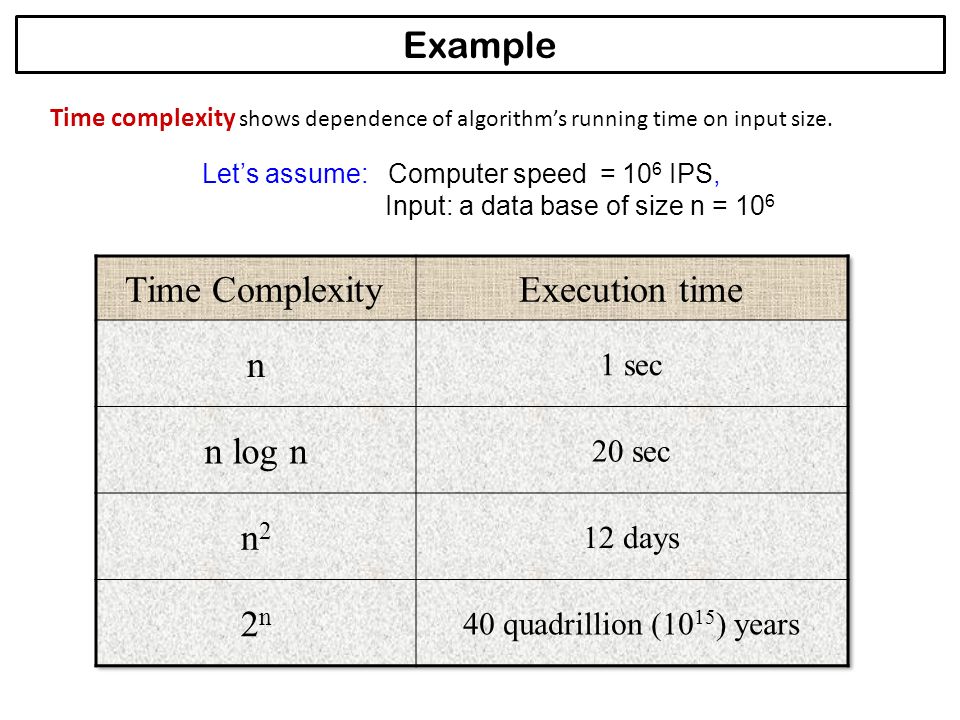



Analysis And Design Of Algorithms Ppt Download




Big O Notation Wikipedia




Solving Vertex Cover Problem From O 2 N To O N 2
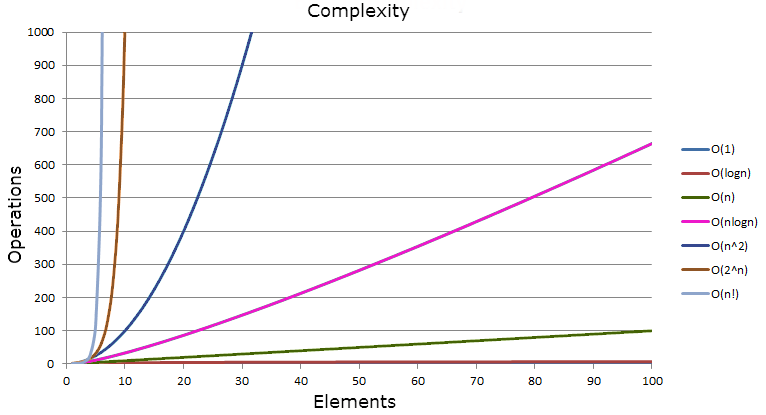



Learning Big O Notation With O N Complexity Lanky Dan Blog
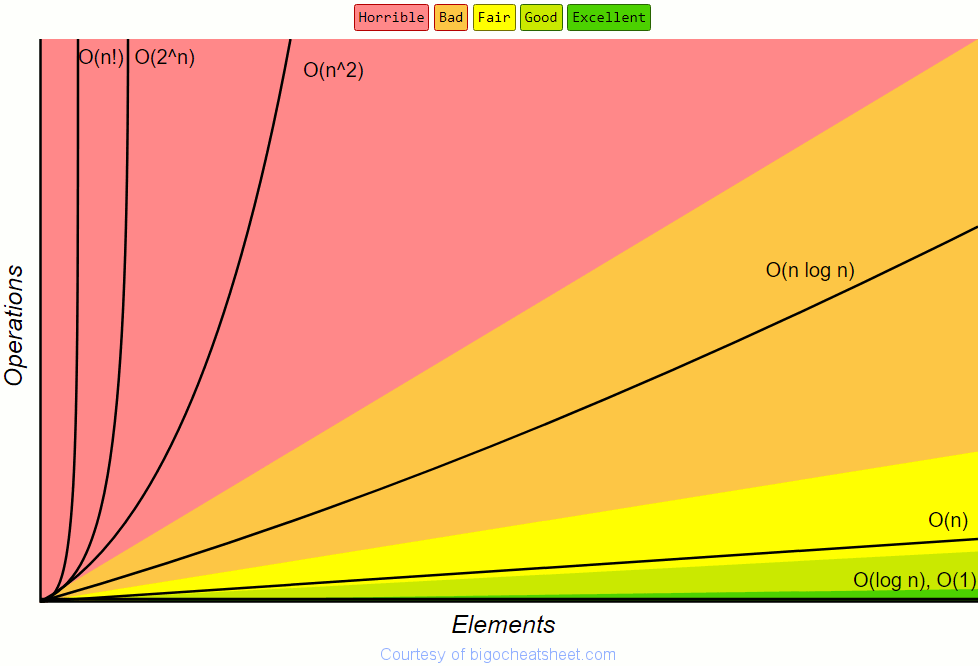



Understanding Big O Notation




Data Center Redundancy N 1 N 2 Vs 2n Vs 2n 1




Big O Notation Explained The Only Guide You Need Codingalpha



Time Complexity What Is Time Complexity Algorithms Of It




Big O Notation Definition And Examples Yourbasic




Big O Notation O Nlog N Vs O Log N 2 Stack Overflow




Computability Tractable Intractable And Non Computable Function



0 件のコメント:
コメントを投稿